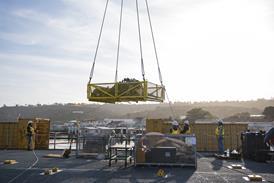Privatising the UK's ATC service is part of a world wide move to put control of the airways on a commercial footing
Having swung between ambiguity and hostility over possible privatisation of the UK National Air Traffic Services (NATS) while in opposition, the UK's Labour Government caught everybody flatfooted when it announced earlier this month that it intends to transfer the operation from state ownership to what it terms a public-private partnership.
In spite of leading the way in the privatisation of state assets since the early 1980s, the UK had previously shied away from interfering with the ownership of its air traffic control activities, even though a growing band of countries led by New Zealand, Germany and Canada have transformed their operations into state-owned corporations or not-for-profit trusts.
The UK cites as motivation for its action the ability to raise private finance, coupled with the need to run the activities efficiently.
The announcement by transport minister Gavin Strang says that the Government's preference is to sell 51% of NATS in a stock market flotation or a trade sale, with 49%, and a golden share, remaining with the state.
Having got the announcement out into the open with little adverse comment to date - except from the unions, which fear for safety and the jobs of its members - Strang now intends a consultation period before legislation is put before parliament, a process which is likely to take about two years from start to finish.
Public-private partnership is a largely unknown quantity in the air traffic control business. Other nations have shied away from giving financial institutions or publicly quoted companies virtual control of such a sensitive monopoly as air traffic control. It is unclear how the Government intends to undertake safety and economic regulation in an era where plans for a new unified European air safety agency dominate proceedings. As is often the case, however, the devil will be in the detail of this particular deal, and the nature of that will not be known for some time.
The unions - which insist that they are not ideologically opposed to privatisation - fear that, with air traffic charges standardised by Eurocontrol, the main avenue for improving shareholder dividends will be through cost cutting. That may be a legitimate concern, the experience of New Zealand when it corporatised its air traffic control activities into a new organisation known as the Airways Corporation, shows that change is almost inevitable once the decision is made to prise day-to-day control of operations away from the bureaucracy of the state.
The first few years following the creation of the Airways Corporation saw several layers of middle management stripped out as staff numbers tumbled .What had been a loss maker was quickly turned into a profitable enterprise.
In 1995, the Airways Corporation credited new technology and the removal of some middle managers for the turnaround. Neither were the profit gains made at the expense of salaries. Estimates showed that the average salary for a New Zealand controller was 2.5 times the average national salary, compared with 1.7 in Canada and 1.4 in Germany - both nations which have since switched to "commercial" airways systems of their own.
In addition, Airways Corporation has been highly successful in exporting its capabilities - a route that a privatised NATS, which already has a thriving business running UK airport air traffic operations - is certain to pursue actively.
The UK Government has rejected the method of commercialisation adopted by Germany, where the publicly owned DFS is allowed to borrow money from the markets and act commercially, but is not driven by profit and still firmly under public control. Eventually, that will change as the organisation is freed from state ties, but, in the meantime, the DFS is held up as a model by a number of people, including the UK air traffic unions, on how to proceed in this safety-sensitive area.
DFS has been operating since the beginning of 1993 and the organisation says that, despite the changes to factors such as employment contracts and recruitment and training strategies, the switch has been welcomed. "Employees realised, as did members of parliament, that the civil service structure would not be able to solve the problems of the previous organisation in handling increasing traffic", it explains.
In Canada, a different approach has been adopted. Since 1996, responsibility for the air navigation service was handed over to Nav Canada, a not-for profit private sector non-share capital corporation that owns and operates the civil system. The corporation is governed by a 15-member board of directors nominated by stakeholders and the federal government.
The Canadian model is reckoned to be too complicated by some observers, however. Neither has its transition been as smooth, with Nav Canada facing an industrial dispute over wages while at the same time proposing to revise charges - mainly upwards - to enable it to wipe out operating losses.
Source: Flight International























